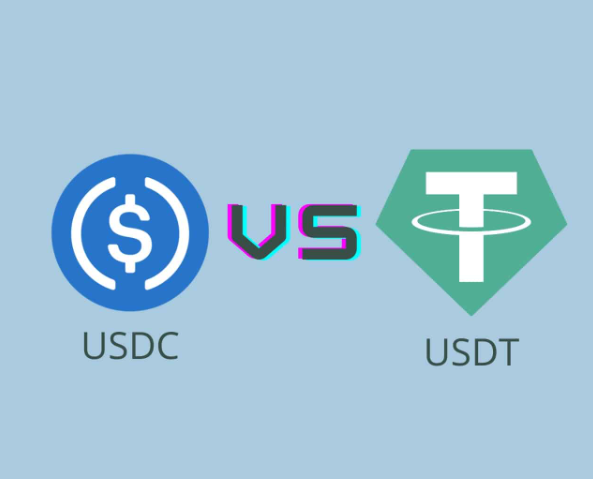bbc.towzdog.com – USDT vs USDC Comparison: Understanding the Key Differences in 2024 As the cryptocurrency market continues to expand, the importance of stablecoins has grown significantly. Among the leading stablecoins are USDT (Tether) and USDC (USD Coin). Both serve as digital alternatives to traditional currencies, providing stability in an otherwise volatile market. In this article, we will delve into a comprehensive USDT vs USDC comparison, examining their features, use cases, and the factors that influence their value.
What are Stablecoins?
Definition of Stablecoins
Stablecoins are cryptocurrencies designed to maintain a stable value by pegging them to a reserve of assets, typically a fiat currency like the US dollar. This peg aims to reduce volatility, making stablecoins suitable for transactions, trading, and holding value.
Importance of Stablecoins
Stablecoins play a crucial role in the cryptocurrency ecosystem by:
- Providing liquidity in trading pairs.
- Facilitating cross-border transactions with minimal fees.
- Offering a stable medium of exchange in decentralized finance (DeFi) applications.
Overview of USDT and USDC
What is USDT?
USDT, or Tether, was one of the first stablecoins to be introduced, launched in 2014. It aims to provide a 1:1 peg to the US dollar, allowing users to trade cryptocurrencies without the inherent volatility. Tether’s issuance is backed by reserves of fiat currencies and other assets.
Key Features of USDT
- Market Dominance: USDT is the largest stablecoin by market capitalization, often used as a benchmark for other cryptocurrencies.
- Liquidity: It is widely accepted across numerous exchanges, enhancing its utility in trading.
- Controversies: Tether has faced scrutiny over the transparency of its reserves and claims of full backing by USD.
What is USDC?
USDC, or USD Coin, was launched in 2018 by the Centre Consortium, co-founded by Coinbase and Circle. It also aims to maintain a 1:1 peg with the US dollar, focusing on transparency and regulatory compliance.
Key Features of USDC
- Transparency: USDC provides regular attestations of its reserves by independent auditors, enhancing trust among users.
- Regulatory Compliance: USDC is issued by regulated financial institutions, positioning it favorably in terms of legal standing.
- Integration: USDC is widely used in various DeFi platforms and is supported by numerous wallets and exchanges.
USDT vs USDC: A Comparative Analysis
1. Reserve Backing
One of the most significant differences between USDT and USDC is how they manage their reserves.
USDT Reserves
Tether claims that each USDT is backed by reserves, which may include cash, cash equivalents, and other assets. However, there has been ongoing debate regarding the exact composition of these reserves, leading to skepticism about its full backing.
USDC Reserves
USDC, on the other hand, is backed by fully reserved assets held in US dollars or equivalents. The reserves are regularly audited by third-party firms, providing a higher level of transparency and assurance for users.
2. Regulatory Compliance
USDT
While Tether operates in a largely unregulated environment, it has faced criticism for its lack of transparency. Regulatory bodies have raised concerns over whether Tether’s practices comply with existing financial regulations, especially regarding anti-money laundering (AML) laws.
USDC
USDC has been proactive in its approach to regulation. It works with licensed financial institutions, ensuring that it complies with relevant laws. This regulatory backing enhances USDC’s credibility among investors and institutions.
3. Usage and Adoption
USDT Usage
USDT is the most widely used stablecoin in trading pairs on major exchanges. Its liquidity makes it a go-to option for traders looking to move in and out of volatile cryptocurrencies quickly. Its dominance in the market allows for better price stability across exchanges.
USDC Usage
USDC has seen rapid adoption, especially within the DeFi space. Many platforms integrate USDC for lending, borrowing, and yield farming. Its strong backing and transparency have attracted institutional investors, enhancing its acceptance in the broader financial landscape.
4. Transaction Speed and Fees
Both USDT and USDC are built on multiple blockchains, including Ethereum and Tron, allowing for quick transactions. However, there are differences in transaction fees.
USDT Fees
Transaction fees for USDT can vary depending on the blockchain used. Generally, USDT on the Ethereum network may incur higher gas fees, especially during network congestion.
USDC Fees
USDC also faces similar fees on Ethereum but has lower fees on the Stellar and Algorand networks. The choice of blockchain can significantly impact transaction costs for both stablecoins.
5. Security and Stability
USDT Security
Tether has faced concerns regarding its security and the potential for market manipulation. While it remains the leading stablecoin, any security breaches could significantly impact its stability.
USDC Security
USDC’s focus on regulatory compliance and transparency enhances its security profile. Regular audits and the backing of reputable financial institutions provide a sense of stability for users.
Current Market Data
USDT and USDC Market Capitalization
As of November 2023, USDT has a market capitalization of approximately $80 billion, while USDC’s market cap stands at around $30 billion. These figures highlight USDT’s dominance in the stablecoin market, but USDC’s growth trajectory indicates increasing adoption.
Trading Volume
USDT consistently reports higher trading volumes compared to USDC, reflecting its widespread use among traders. However, USDC’s trading volume has been rising steadily, especially in DeFi protocols, which may signal a shift in user preferences.
Pros and Cons of USDT and USDC
Pros of USDT
- High liquidity: USDT is available on nearly every exchange, making it easy to trade.
- Market leader: As the first stablecoin, it has established a strong presence in the crypto market.
Cons of USDT
- Transparency issues: Tether has faced scrutiny over its reserve management and backing claims.
- Regulatory scrutiny: Potential regulatory issues could impact its future.
Pros of USDC
- Transparency: Regular audits build trust with users.
- Regulatory compliance: Strong legal standing positions it favorably in the market.
Cons of USDC
- Lower liquidity: While growing, USDC’s market presence is smaller compared to USDT.
- Adoption barriers: Some traders may prefer USDT due to its established dominance.
Conclusion
In the USDT vs USDC comparison, both stablecoins offer unique benefits and drawbacks. USDT remains the market leader, providing high liquidity and widespread adoption, making it a favored choice for traders. However, concerns about transparency and regulatory compliance could pose risks.
On the other hand, USDC is rapidly gaining traction, especially among institutional investors and DeFi platforms, thanks to its transparency and regulatory compliance. As the cryptocurrency landscape evolves, both stablecoins are likely to play crucial roles, but user preferences may shift based on their unique features and market dynamics.
For ongoing updates and more detailed insights into stablecoins and the cryptocurrency market, visit CoinMarketCap for the latest data and trends.




